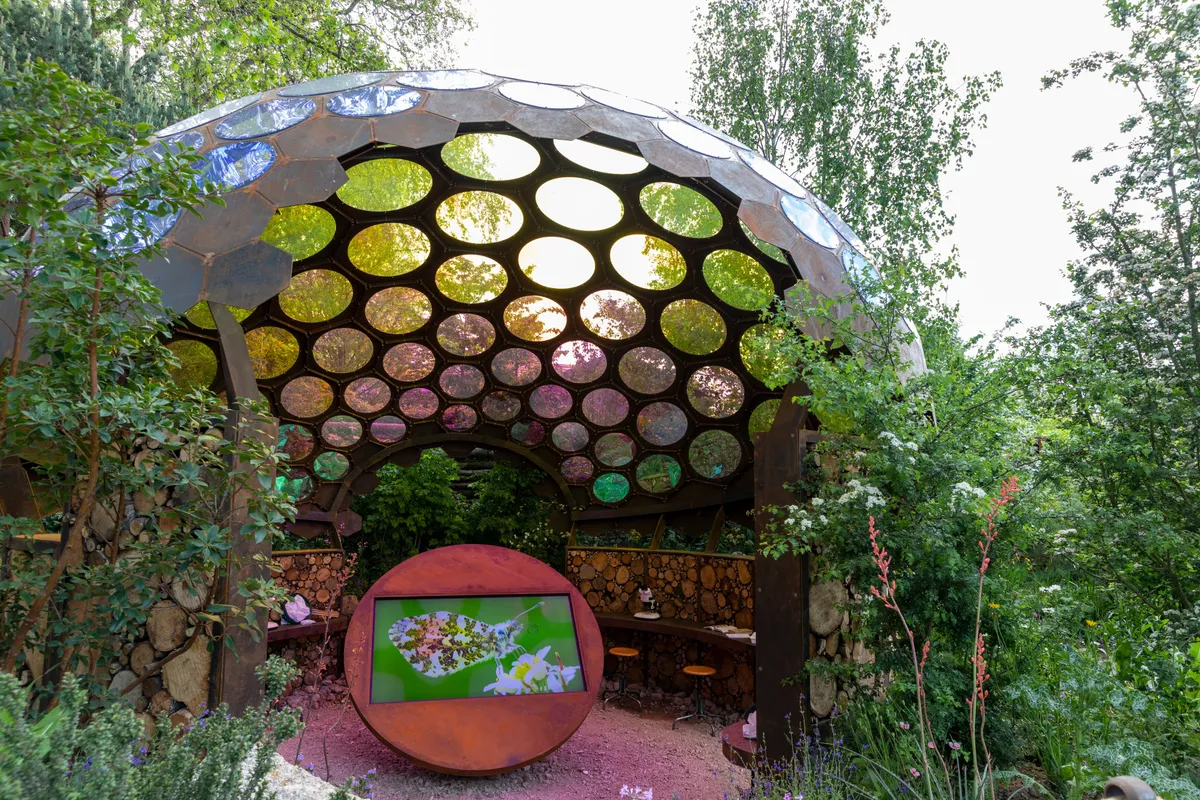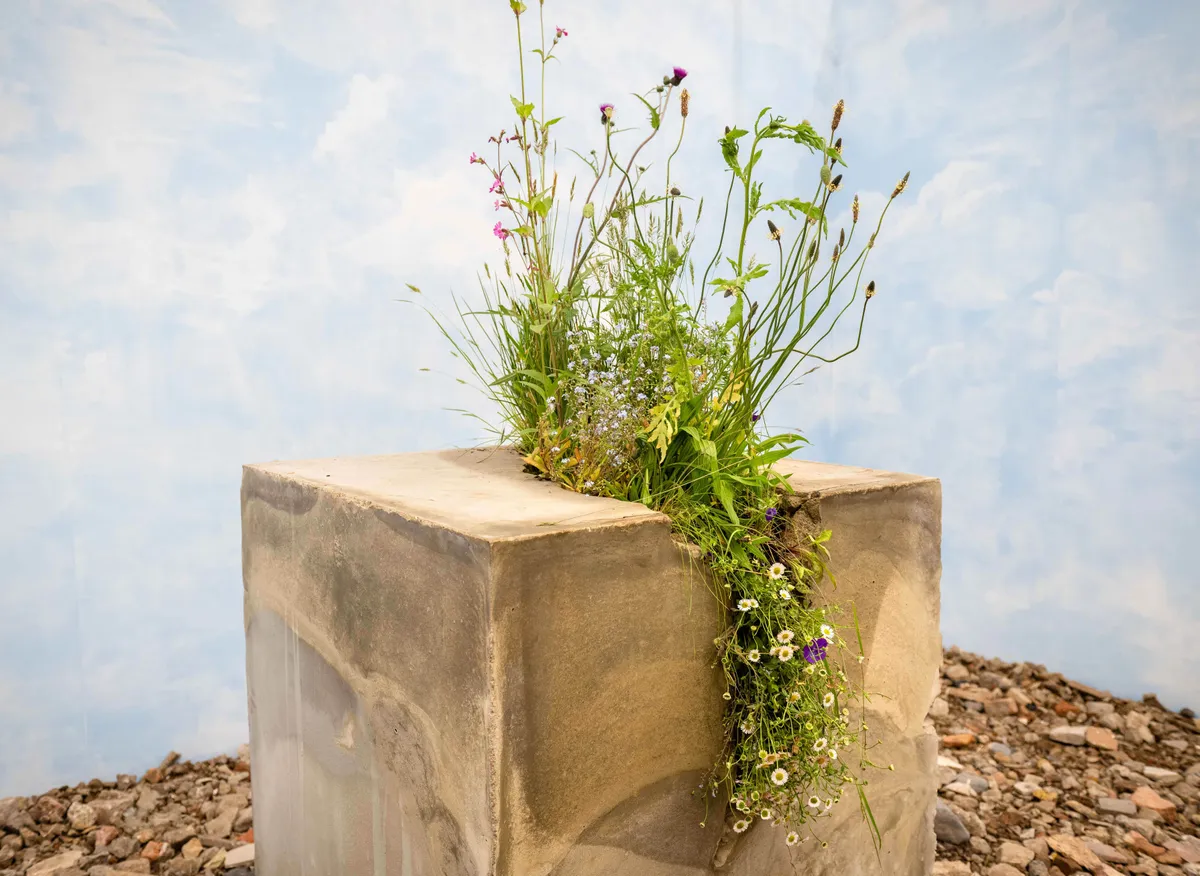A lot has been said about themes at RHS Chelsea Flower Show this year – foremost has been the celebration of weeds, the reuse of materials, and a more climate conscious approach to planting - but at the same time, it was hard to pinpoint an overarching approach to the gardens this year, which in some ways makes it hard to round up impressions of the show.
On the one hand, not being able to pinpoint a theme is good. There was comment that there were gardens to suit everyone – from the thought-provoking (building on from last year’s Rewilding Britain show garden from designers Lulu Urquhart and Adam Hunt for, which flummoxed many a gardener) through to the life-style desirable.
We’d likely be bored now by a show that really was ALL gardens in the traditional sense – it was Dan Pearson’s representation of the Trout Stream at Chatsworth in 2015 that was one of the more recent gardens to push the boundaries by presenting an ‘evocation’ of a place rather than a garden.
But is this year’s split personality indicative of us having reached something of a tipping point in the world of gardening – and if it is, how should that pinnacle of excellence that is the Chelsea Flower Show be navigating this?
More on
- Chelsea Flower Show Main Show Gardens 2023: the full list
- Chelsea Flower Show 2023: Sanctuary Gardens
- Chelsea Flower Show 2023: All About Plants gardens full list
Nature v nurture
This is the nub of the question – whether nature itself knows better, grows better, is better for us and allows a more sensitive approach to our planet? Or does a bit of human intervention in the creation of a controlled and stylised space allow us to improve on nature and better our interactions with the outside world?
Show gardens such as those by Tom Massey for the Royal Entomological Society, Cleve West’s thought-provoking space full of metaphors for youth homelessness charity Centrepoint, the exquisite South Korean mountainside journey evoked in Jihae Hwang’s show garden complete with precious rarities, or Jilayne Rickard’s celebration of Africa’s native species both plant and animal, aren’t obviously going to have people taking away ideas for their own gardens, but they do go some way in shifting our perspectives of just how precious the natural world is.

Versus gardens in the more culturally accepted sense, such as Mark Gregory’s potager with outdoor kitchen and dining space, which speaks to our desire to create an identity of our own in our gardens and to consider how our lifestyles might be more generous and fulsome. Sarah Price’s achingly beautiful garden had a serenity that promised a calm and uplifting sense of hope to all who entered there. Here were ideas a plenty to consider for one’s own garden.
Which, in our age of multiple crises, is the right approach? The answer likely lies in the middle, but how does the RHS navigate this when it comes to awards and medals?
There’s another tipping point too in the question of ‘where’ we find our gardens
Inspiration
There’s another tipping point too in the question of ‘where’ we find our gardens. Touched on in last year’s show, the idea of the brownfield garden came of age this year. There are huge sustainability lessons here in learning to work with concrete, rubble and rubbish as a substrate and recognising tougher, more resilient, less-cultivated plants as worthy, which can see us help to heal human vulnerabilities, but also our ravaged planet too.
Utilising the post-industrial spaces that our digital towns and cities are now home to and making them into planted spaces has many benefits. It opens up access to those with no garden or who need a space away from home – see Jon Davies and Steve Williams’s The Balance Garden Centre for Mental Health – and it can bring communities together in a shared space.
This was echoed in Tayshan Hayden-Smith’s tiny Grow2Know display in the Great Pavilion – a cracked concrete block flourishing with a rush of wild pioneer plants, reminding us of the need to support communities striving to heal themselves following periods of trauma or neglect. In a time when the importance of green spaces to our wellbeing is well documented, the inequality of access can still be shameful.

We as people and gardeners recognise and applaud these messages, but then, if we’re honest, probably also quite like the idea of a private, practical terrace, with a generous outdoor sofa, wood-fired hot tub hidden from view by lush, tropical growth…
Questions for the future
The healing power of gardens leads on to Project Giving Back – the initiative set up by undisclosed philanthropists to give designers support in creating show gardens for charitable causes that raise awareness AND go on to have a life after the show. The project has injected both money and vigour into Chelsea, with 15 gardens supported this year. Many an established designer has been drawn back to creating ‘just one more’ Chelsea garden in the knowledge that their creations will live on beyond the craziness of show week and really can benefit others. Plus up-and-coming designers, including Charlie Hawkes for his Rare Space garden in the Sanctuary category and Harry Holding with his School Food Matters garden in the All About Plants section, have been given mentorship, support and exposure that would more usually take decades to build up.
What on earth happens when Project Giving Back’s three years of support comes to an end next year?
But is this another tipping point facing the show? While all Chelsea show gardens are required to prove how the materials and plants will be used after the show, how does the visitor and the judges view a PGB garden against one that didn’t get a PGB selection? And with PGB really opening our eyes to the power of gardens and garden design to improve lives, what on earth happens when Project Giving Back’s three years of support comes to an end next year? How does the RHS go on to positively build relationships between sponsors and designers?
Keeping the show growing
While the Great Pavillion certainly had more of a buzz than the past few years, the question has to be asked as to how we encourage the next generation of growers and nursery owners. With news abounding of specialist growers retiring and plant collections dispersing, how does the RHS help support those brave new plantspeople to carry on championing our phenomenal quality and range of garden plants? (Perhaps if we carry on championing weeds, the next generation won’t see any need to go into horticulture!)
Some years Chelsea can feel as if nothing has moved on
This year’s Plant Fairs Roadshow section, though, was a positive step, with seven nurseries, who otherwise would have struggled to put on a display, given the opportunity and mentorship to exhibit together under one name at Chelsea. Their small exhibits really seemed to engage visitors, who were able to get even closer to the plants than is often possible.
There was another gentle progression too in the Great Pavilion to this year, with nurseries being allowed to sell a few small plants. Previously hampered by restrictions (and lack of space) – surely being able to sell both plug plants or conveniently curated plant box sets – helps the growers engage more directly with the plant-hungry public and can go a little way to offsetting the costs of taking a stand at Chelsea.
Some years Chelsea Flower Show can feel as if nothing has moved on – similar plants, similar gardens. That wasn’t the case this year. It really did feel that change was afoot and that it was up to both the RHS and visitors to decide how they responded and what happens next.
Roll on Chelsea 2024.
